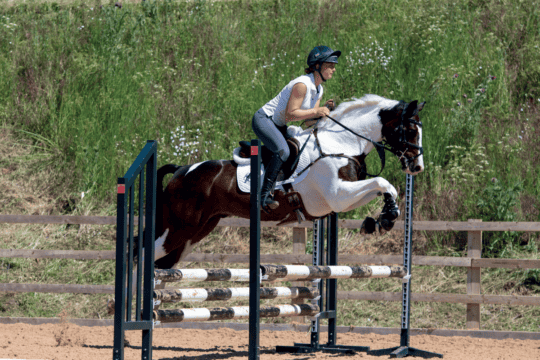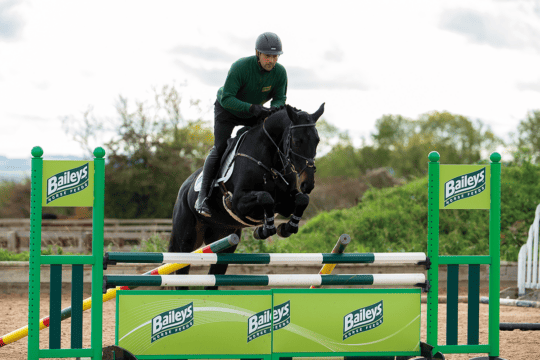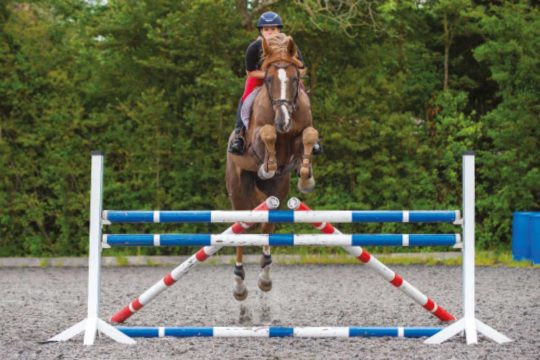-
Riding Schooling and Training
-
Health and Veterinary
-
Management
-
Mind Matters
-
Buying and Selling
-
Insurance Advice
FAQs
Featured Professional

Pippa Funnell
Pippa Funnell is firmly established as one of the world's leading three day event riders.
Jumping a grid is a great way to improve your horse’s rhythm, balance and confidence. Pippa Funnell explains how
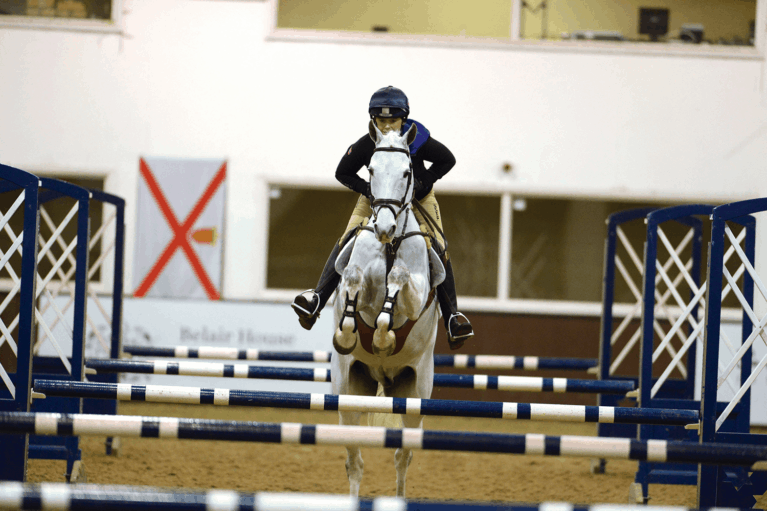
Setting up a gridwork session might seem like a lot of effort to begin with, but the benefits for both you and your horse far outweigh any time you spend preparing, especially when you can do so many different things with just one grid. These exercises show you how you can use one three- or five-fence grid to help you improve your balance and seat, your horse’s rhythm and technique, and confidence for both of you.
Exercise 1 – Using a grid on the ground
Set up a grid of five fences on the centre line, with one stride (approximately seven metres) between each fence. Riding around the fences will help you to settle your horse and, if he’s spooky, give him plenty of time to look at the fences before you try jumping them. Trot around each fence as if you were riding a serpentine, making each loop as deep or as shallow as you need but with large, sweeping turns as if you were riding half circles. Use the fences to encourage him to bend. He might feel all over the place to begin with, so make sure you sit centrally and this will help him to find his own balance. Each time you cross the centre line between the fences, change
your diagonal and bend. To begin with you could do this by coming back to walk for a few strides if you need to – the key is to maintain his balance.
To step it up a level, try the exercise in canter. Each time you cross the centre line, ride a simple change through walk, continue in walk a few straight strides and then pick up canter again on the other leg. Don’t worry if you don’t get it right the first time, or even the second or third. Keep practicing until you’ve got it. Doing the simple changes like this really helps to encourage your horse to sit back on his hindlegs and come off his forehand, which will help him produce a bouncier canter that is better for jumping. If your horse can, you could progress to riding the exercise with a flying change, too. Avoid over-thinking the changes, just get on with riding the exercise and they will come. When you can ride a smooth and consistent serpentine, change the shape so that you’re riding straighter for longer with much tighter, less sweeping turns. Don’t let your horse rush on the straight parts because it will make it difficult for you to steady him for an accurate turn.
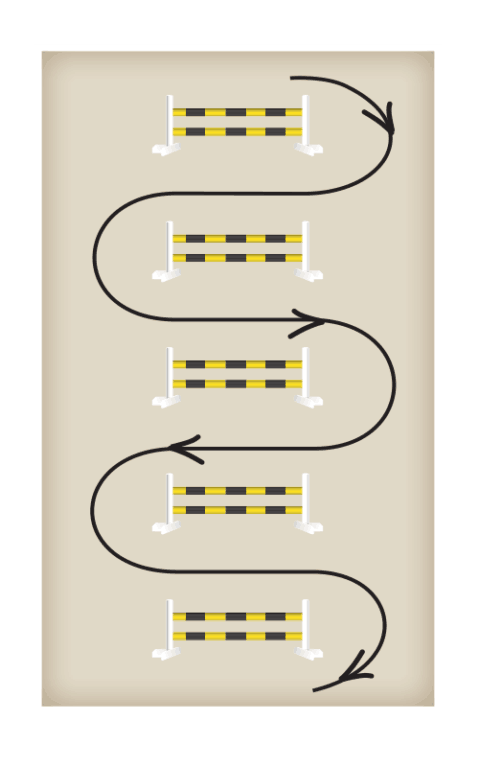
For more of Pippa’s tips and gridwork exercises, get your copy of December Horse&Rider, on sale 20 October.




